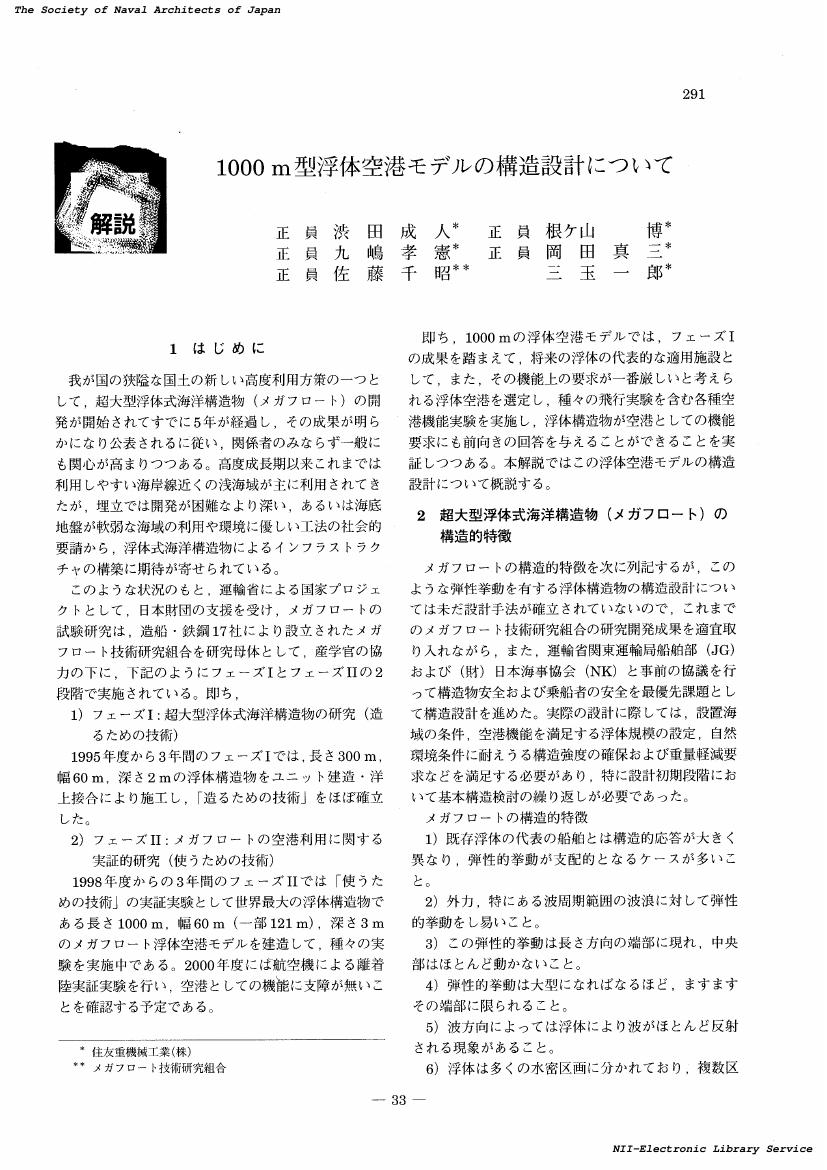38 0 0 0 OA 1000m型浮体空港モデルの構造設計について
- 著者
- 渋田 成人 根ケ山 博 九嶋 孝憲 岡田 真三 佐藤 千昭 三玉 一郎
- 出版者
- 公益社団法人 日本船舶海洋工学会
- 雑誌
- Techno marine 日本造船学会誌 (ISSN:09168699)
- 巻号頁・発行日
- vol.850, pp.291-299, 2000-04-25 (Released:2018-03-28)
- 著者
- 佐藤 千昭 川村 昭宣
- 出版者
- 公益社団法人 日本船舶海洋工学会
- 雑誌
- Techno marine 日本造船学会誌 (ISSN:09168699)
- 巻号頁・発行日
- vol.841, pp.512-529, 1999-07-25 (Released:2018-03-28)
1 0 0 0 OA 河川を活用した浮体式災害時医療支援システムの実現可能性に関する基礎的検討
- 著者
- 惠藤 浩朗 佐藤 千昭 増田 光一 居駒 知樹 清水 研 畔柳 昭雄 山口 順子
- 出版者
- 社団法人 日本船舶海洋工学会
- 雑誌
- 日本船舶海洋工学会論文集 (ISSN:18803717)
- 巻号頁・発行日
- vol.19, pp.245-253, 2014 (Released:2014-08-28)
- 参考文献数
- 18
An innumerable number of buildings in the coastal part of the east side of Japan were devastated by the Great East Japan Earthquake and Tsunami. Medical institutions also suffered the damage caused by tsunami, and the function to carry out the medical act has been spoiled. And the disabled concentrated on the medical institution which avoided tsunami damage. Under such circumstances, assistance from the water area began three days after the earthquake disaster, and much support supplies reached the stricken area. It was revealed that the support from the water area including the river was extremely effective against the stricken area.And then, the Tokyo Inland Earthquake disaster was assumed, floating medical support system installed in the quay of Arakawa River in Tokyo was proposed. Floating medical support system is movable; furthermore, it is built in the structural system of having very high isolation characteristics. Therefore, feasibility study such as selection of suitable setting position of this floating structure on Arakawa River, floor planning and flow planning at the time of always and a disaster, facilities and storage of various material,structural strength of the floating base, and the effects of disaster risk reduction was carried out about floating medical support system.

